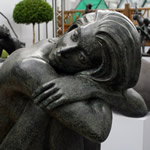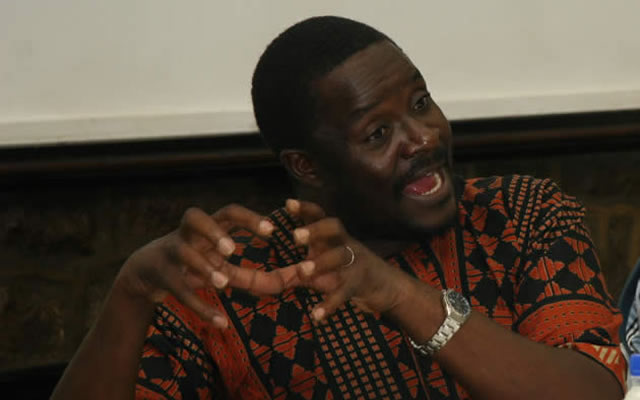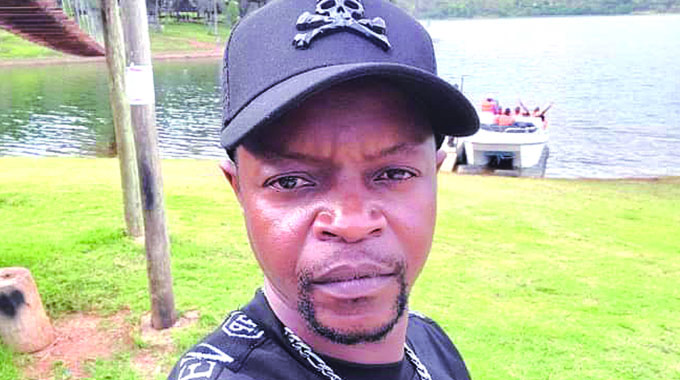Retracing sculpture origins in Zim

 Stephen Garan’anga Own Correspondent
Stephen Garan’anga Own Correspondent
Zimbabwe’s stone carving is as ancient as rock paintings of the San people who were hunters and gatherers living in caves or under cliffs. They migrated extensively in family groups throughout the Kalahari desert and the surrounding areas living thousands of rock paintings depicting animals and hunting scenes.
They created effective stone weapons for big game along an array of their other hunting weapons to the times they began to settle in strategic areas for longer periods.
Much later Bantu people migrated from the north, establishing a society founded mostly in agriculture. They had knowledge of working iron, and thus decisive social changes took place over the centuries which, with the discovery of, work on, and trade with gold- first mentioned in the tenth century- led to the prospering of the by now well organised dynasties of the Shona people, culminating in the Empire of Great Zimbabwe.
Artistic remnants of carved stone birds and other figures dating back to the 13th century were found at the ancient rectangular granite stone walled Great Zimbabwe. There were also other carved stone storage facilities which were found in various parts of early settlements.
The much documented Zimbabwean modern stone art form stretches back to the late 1950s when what was considered as the first art initiative created independently by a local native African artist was born. In Eastern Highlands of Southern Rhodesia at the time (in Nyanga), Joram Mariga, who in 1958 worked as a labourer repairing roads near the Mozambique border, realised that the stones they were using to fill potholes could be put to other use.
He and his colleagues began producing perfect copies of historical stone containers, small statues and utility objects. Initially they gave them away as gifts to friends and passers-by. They were not considered to be trying to produce artistic items, but as good stonemasons they quickly experimented and perfected a new artistic tradition.
Without doubt Mariga’s group can be cited as the earliest native Africans to come up with the artistic initiative in today Zambia and Zimbabwe. They represented the beginning of a bigger artistic tradition which would later put the two countries firmly on the art world map.
Rhodesia’s sudden economic prosperity in the 1950s provided added stimulus to this blossoming of artistic interest, as was the white population’s need to find cultural expression at a time when they were becoming increasingly marginalised from world opinion for their practice of racial segregation.
Several leading cultural institutions were opened that would not have been supported previously. One of these was the National Gallery in Southern Rhodesia’s capital Salisbury (now Harare). This was envisaged as a celebration of Western art as well as a centre for art education. Britain’s Queen Elizabeth opened the National Gallery in 1957 and its establishment was the major impulse giving birth to modern art in both Rhodesia and Northern Rhodesia (Zambia and Zimbabwe respectively).
British Frank McEwen was its first director who also established its Workshop School which became the mother of various local art movements. Rhodesian sponsors who were behind the realization of the Gallery expected him to focus on European art and the preferences of the racist white minority but he was also determined to demonstrate the artistic talents of the native Africans.
He convinced all the Gallery employees who were native Africans to try their hand at art. He encouraged his new art students to create art which was not necessarily like that of the exposed European, but what they could imagine within their local context. Various media were encouraged from painting, clay, wood etc. and African painting got the head-start with local heroes such as Thomas Mukarobgwa and Kingsley Sambo.
That was short-lived as the art of stone sculpture took over when McEwen was shown Joram Mariga and his colleagues’ works by artist Pat Pearce. McEwen immediately chose to assist this formidable group of twenty self-taught sculptors. The group now under the guidance of the Gallery together with its Workshop School students embarked on modern stone sculpture with quality carving stones being provided by Mariga.
Joram emerged as the leader of the self-taught group which now consisted of his wives and relatives who included his cousin Chrispen Chakanyuka, his nephews John, Bernard and Patrick Takawira. They had inspiration from their Shona traditions and dreams.
The first success of the Workshop School in stone came from such artists as Nicholas Mukomberanwa and Joseph Ndandarika who were former Serima Mission art students, Boira Mtekiwho had come from Cyrene Mission art centre and the ultimate Thomas Mukarobgwa who was already working for the Gallery from its beginning and practicing art.
The first stone pieces which featured in the Gallery’s Annual Exhibition intrigued many enabling McEwen to fully mobilise his Workshop School which was to be attended by numerous native Africans in the ensuing years.
In 1965 when Ian Douglas Smith, a white supremacy leader of the Rhodesians unilaterally declared independence, the United Nations imposed sanctions. Tobacco production which was a key sector of the economy was hit hard and a tobacco farm near Guruve owned by white South African Tom Blomefield who grew up in an artistic family was no exception.
He discovered a source of quality carving stone on the farm and began to experiment on sculpture with his workers. Shortly he met with Frank McEwen who took charge and improvised an art school under his wing. He referred to it as the National Gallery’s “bush art studio” though Tom Blomefield disapproved and subsequently named it Tengenenge or “Place of the Beginning”.
With only a few months many had become stone sculptors led by the then established Crispen Chauruka of the original self-taught group led by Mariga. Their work received honours at the National Gallery’s Annual Exhibition.
Tengenenge then emerged a number of outstanding stone sculptors who included Ephraim Chaurika, Leman Moses, Enos Gunja, Sanwell Chirume, Edward Chiwawa, Sylvester Mubayito highlight a few. Blomefield transformed his farm into a fully multicultural and multiethnic community with an informal but tolerant association of Muslims, Christians and traditional African spiritualists.
More than half of the farm’s population were foreigners who had come from Zambia, Malawi, Angola and Mozambique in search of work in tobacco farms of Rhodesia’s booming economy.
The chief masterminds of the sculptural colony were local Shona people such as Bernard Matemera, Henry Munyaradzi but they were also inspired by the foreign immigrants who brought with them a diversity of spiritual and practical influences. Among them were Northern Rhodesian (Zambia) born FanizaniAkuda, Angolan Makina Kameya and Fly Furai, Mozambique’s Paul Meza, Malawians Ali Chitaro, Josiah Manzi and AmaliMalolato mention some.








Comments